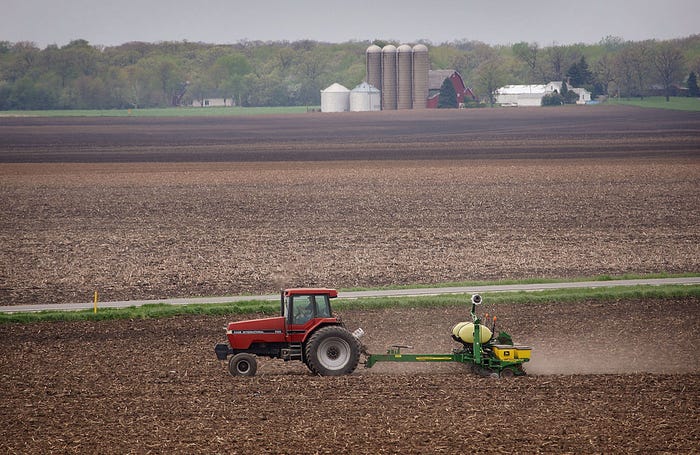Content Spotlight
How long can my sow herd remain free of PRRSV?
Location, regional pig density, general biosecurity practices and air filtration all need to be considered.

Legislative Watch: Enough is Enough tour; Bill to promote farming, ranching for veterans; USDA celebrates Earth Day with clean energy funding.
Cash Grain Bids for
corn
ZCK24
$4.35
corn
ZCZ24
$4.39
soybeans
ZSK24
$11.05
soybeans
ZSX24
$11.10
| Contract | Last | Change | High | Low | Open | Last Trade |
|---|---|---|---|---|---|---|
| Jul 24 Corn | 450 | -2 | 454 | 449.25 | 451.75 | 06:19 PM |
| Jul 24 Oats | 358.75 | +7.75 | 360 | 352.25 | 352.25 | 06:17 PM |
| May 24 Class III Milk | 18.03 | -0.15 | 18.4 | 17.72 | 18.28 | 06:52 PM |
| Jul 24 Soybean | 1177.25 | -2.5 | 1181 | 1172.5 | 1179 | 06:19 PM |
| Aug 24 Feeder Cattle | 260.55 | +2.25 | 261.55 | 258.35 | 258.9 | 06:04 PM |
| May 24 Ethanol Futures | 2.161 | unch — | 2.161 | 2.161 | 0 | 10:51 PM |

Copyright © 2019. All market data is provided by Barchart Solutions.
Futures: at least 10 minute delayed. Information is provided ‘as is’ and solely for informational purposes, not for trading purposes or advice.
To see all exchange delays and terms of use, please see disclaimer.
Location, regional pig density, general biosecurity practices and air filtration all need to be considered.
Watch This Week in Agribusiness with Max Armstrong to see what's happening in agriculture each week.
Mike Pearson is talking clean soil, biodiesel and even a look at what’s going on with the apple industry.
Mike Pearson gets you ready for planting season and learns about the tough year for crawfish.
EPA’s snub of renewable fuels, land values, grain bin monitoring, new John Deere equipment, commodity transportation impacts, cover crops and carbon, fuel delivery trailers and supply chains are featured this week.
Check out this month's digital edition articles from National Hog Farmer.